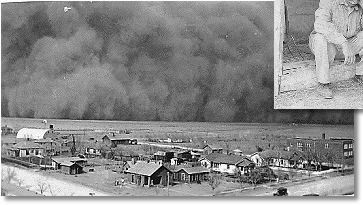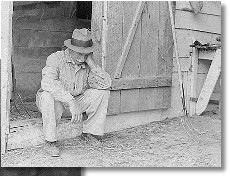
|
|














What created these ghost towns? The answers are numerous and depend on geographic location. The discovery of precious metals in the American West helped spur the instant development of many mining towns, especially in mountain regions. After minerals were mined out or the price dropped significantly, towns that had been created to support the mining industry could not sustain themselves. Today, ghost towns receiving the most publicity are of this origin and lie within picturesque mountain scenery. However... |
Towns were built and destroyed for other reasons on the great plains. Eccentric town builders and railroad subsidiaries platted many would-be cities. Unlike mining towns, prairie towns were usually agriculture in nature. Most failed because they could not surmount the challenge inherent in life on the rugged, dry plains of Colorado. Agriculture suffered from inadequate irrigation and poorly adapted farming techniques. This, combined with national economic depressions and drought cycles, doomed many communities. Duststorms during the 1930s buried entire towns and farms under dirt forcing inhabitants to abandoned what they had worked for. |
The life and death cycle of an agricultural town can best be described using the Endicott AGToL Scale: 1.) Establishment Phase 2.) Generation Phase 3.) Focal Event Phase 4.) Degeneration Phase 5.) Nadir Phase 6.) Recovery Phase |
An event occurs that is ultimately responsible for halting phase 2 and beginning phase 4. |
Population vacates region and services discontinue. Phase may take place immediately or over a lengthy period. |
Town reaches status opposite of its peak. Site decays. |
Town attracts property buyers and grows. Services are established. |
Town builders or railroad create new town by having a plat surveyed and sometimes a post office established. Motivation is real estate or social improvement. |
Human-Enduced Environmental Failure Climatic Catastrophe Mass Economic Failure Infrastructure Engineering |
Copyright 1999 - 2008 |
All Rights Reserved |
Courtesy National Archives NLR-PHOCO-A48223 (3719) 33 |
Courtesy National Archives NWDNS-16-PSC-32315 |